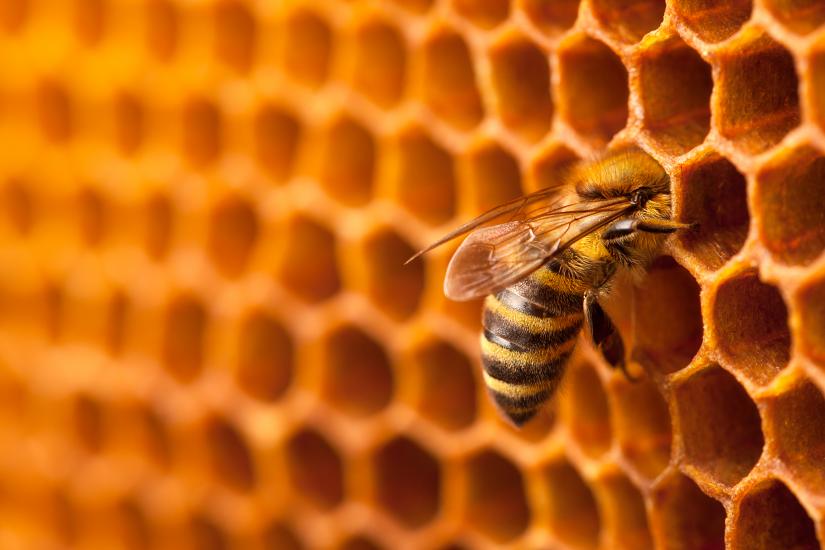Building partnerships to accelerate generation and impact for malignant wound care
Cancer Symptom Trials (CST) and IMPACCT are partnering with a variety of experts - in microbiology, chemistry, wound management, professional learning, public health, health economics, and engineering - to address a significant challenge for people living with malignant wounds.
We want to address the lack of evidence for guiding effective care in managing the symptoms of malignant wounds so that quality of life is supported - for people with cancer and all those affected by malignant wounds. We will explore the role honey may play in making symptoms manageable, allowing people to stay connected with their communities and normal activities.
The problem
Malignant cutaneous wounds occur in 5-14% of people with advanced cancer. They are caused by infiltration of the skin by a tumour/metastasis. While a person has the cancer, the malignant wounds do not heal. Consequently, care aims to manage the symptoms of the wound for quality of life.
The symptoms of malignant wounds are often distressing to people with their wounds and those that care for them. For example, the wounds can have a malodour that overwhelms the person and others in the room. The malodour and other symptoms such as wound fluid leaking can evoke feelings of shame and embarrassment, leading to social isolation.
Why honey?
Honey has been used as a topical medicine throughout history. It is a potent anti-infective and has wound-healing properties.
With the onset of the antibiotic resistance crisis, and the discovery that bacteria do not develop resistance to honey, interest in honey as a topical medicine is gaining momentum.
Medicinal honey dressings are available globally but there is a lack of research on using honey dressing in malignant wound care.
The challenge
Managing the symptoms of malignant wounds is surrounded by uncertainty. Experts with training in malignant wound management are in limited supply, recommendations are informed by low-quality data and dressings in the marketplace number in the thousands.
Odour management is ad hoc. This makes it likely that not everyone is receiving effective, empowering and sustainable care of their wound. It also means that there may be avoidable cost burdens for health care systems and individuals.
Aim
Our aim is to build evidence to inform best practice in managing the symptoms of malignant wounds. As part of that, we want to explore the role honey may play in improving the lives of people affected by malignant wounds and discover.
How can I help?
Health professionals
Collect data! Data collection has commenced for the IMPACCT Rapid Program nursing series, Dressing for malignant cutaneous wounds. Find out more on the Rapid Adult Program page.
If you are a clinician working with people who are suffering due to malignant wounds, we want to hear about the treatments you are prescribing and implementing.
Join this Rapid program series by expressing your interests online via the Rapid Program page or email your interest to the Rapid Program Coordinator at rapid@uts.edu.au.
People living with wounds and/or caregivers
Your experience is vital to our research, which we hope will improve the lives of people like you. We need your advice and input into our research design and implementation to ensure we address the issues of most concern to you.
Find out how to become an IMPACCT consumer representative online via our consumer engagement page or email your interest in this project to cst@uts.edu.au.
Collaborators
This project is a collaboration of researchers from the Faculties of Health, Science, Arts and Social Sciences, and Engineering and Information Technology. It also includes external partners with significant expertise in wounds and alternative treatments.
Investigation team
- Professor Liz Harry, Principal Investigator
- Distinguished Professor Jon Adams
- Professor Meera Agar
- Dr Nural Cokcetin
- Professor Nick Hopwood
- Dr Suzanne Kapp [opens external site]
- Yinyin Phyo
- Dr Rayan Saleh Moussa
- Associate Professor Steven Su
- Dr Maiken Ueland
- Professor Rosalie Viney
UTS centres and schools
- Improving Palliative, Aged and Chronic Care through Clinical Research and Translation
- Cancer Symptom Trials
- ithree institute
- Centre for Health Economics Research and Evaluation
- Australian Research Consortium in Complementary and Integrative Medicine (ARCCIM)
- School of International Studies and Education
- School of Mathematical and Physical Sciences
- School of Biomedical Engineering


